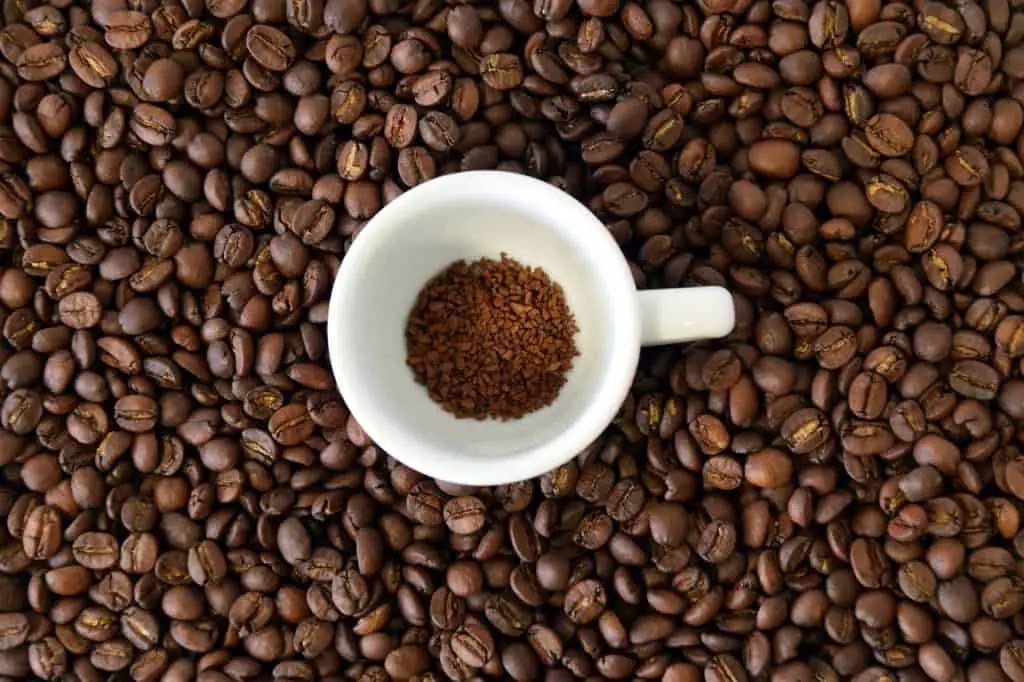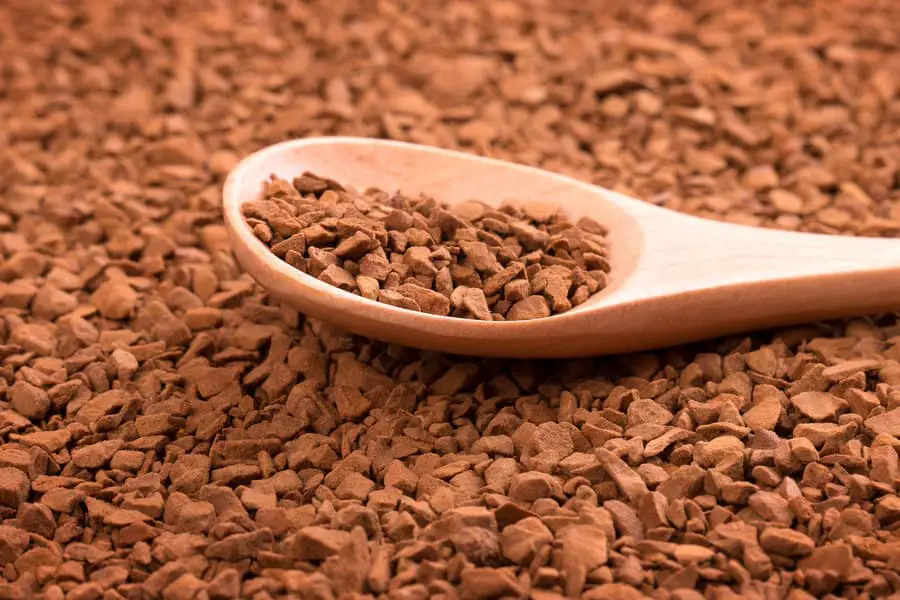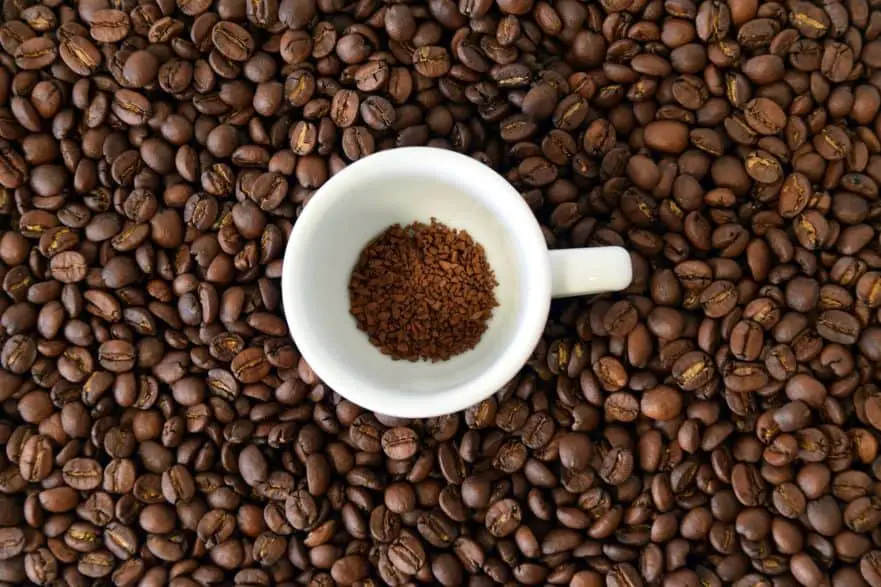
Pouring hot water over instant coffee granules delivers a quick, tasty cup in seconds, but the journey to that convenient form is anything but simple. Far from just dried coffee, instant coffee results from a complex process that transforms raw beans into a shelf-stable powder.
This guide breaks down every step—bean selection, roasting, grinding, extraction, drying, and packaging—so you can appreciate the craft behind your morning brew.
Why Instant Coffee Matters
Instant coffee is a go-to for busy days, travel, or anywhere you need caffeine fast. First developed in the late 19th century and surging in popularity after World War II, it’s now a global staple, with brands like Nescafé and Folgers in countless kitchens.
Unlike brewed coffee, instant coffee dissolves instantly in hot or cold water, delivering bold flavor without equipment. Its long shelf life—up to two years—adds practicality, and modern methods make it taste closer to fresh coffee than ever. Exploring how it’s made reveals the science and care behind this everyday convenience.
Step 1: Bean Selection
High-quality instant coffee starts with high-quality beans. Manufacturers carefully choose coffee beans for their flavor, aroma, and consistency, ensuring the final product stands out. Arabica beans, known for their smooth, nuanced taste, often feature in premium instant blends, while Robusta beans, stronger and more bitter, boost caffeine and affordability in budget options. Beans hail from regions like Brazil, Colombia, or Ethiopia, each offering distinct notes—chocolatey, fruity, or earthy.
The selection process is thorough. Beans are graded for size, density, and defects, with only the best making the cut. Brazilian Arabica might bring rich, nutty tones, while Ethiopian beans add floral or citrusy zing. Freshness matters, so beans are typically processed soon after harvest to lock in their natural qualities before roasting begins.
Step 2: Roasting the Beans
Roasting unlocks the beans’ flavors and aromas, shaping the taste of instant coffee. Large industrial roasters heat green coffee beans at 350–500°F, rotating them for even cooking. The roast level—light, medium, or dark—defines the profile:
- Light Roast: Pale brown, with bright, fruity, or floral notes like citrus or jasmine.
- Medium Roast: Balanced, with nutty, caramel-like flavors and a slight oil sheen.
- Medium-Dark Roast: Rich brown, with chocolatey, slightly bitter tones and more oils.
- Dark Roast: Shiny black, bold, and smoky, with intense, roasted flavors.
Roasting lasts 5–15 minutes, shorter for light roasts and longer for dark. Instant coffee often blends roast levels for consistency, unlike specialty brews that highlight single origins. This step also removes moisture, preparing beans for grinding and extraction.
Step 3: Grinding the Beans
Roasted beans are ground into a fine powder to maximize flavor during extraction. Grinding increases surface area, allowing water to pull out the coffee’s oils, acids, and aromatics. Industrial burr grinders produce a uniform grind, slightly coarser than espresso but finer than drip coffee, ensuring optimal extraction.
Grind size is critical. Too coarse, and the coffee tastes weak; too fine, and it clogs equipment. Manufacturers calibrate this step to create grounds ready for the extraction phase, where they’ll release their full flavor into a liquid concentrate.
Step 4: Extraction Process
Extraction transforms ground coffee into a liquid concentrate, the core of instant coffee. Hot water, heated to 175–195°F, flows through the grounds in large industrial percolators, similar to an oversized drip brewer. This process dissolves about 20–30% of the coffee’s soluble compounds, capturing its flavor and aroma.
Extraction methods vary:
- Percolation: Water passes through coffee beds in columns, like drip brewing.
- Immersion: Grounds soak in water, similar to a French press, for deeper flavors.
- Countercurrent: Water and grounds flow oppositely for efficiency.
Water temperature, pressure, and extraction time (10–30 minutes) are tightly controlled. Over-extraction makes coffee bitter, while under-extraction leaves it weak. The result is a thick, syrupy extract ready for drying.
Step 5: Drying the Extract

The liquid coffee extract must become a dry, soluble powder. Two primary drying methods—freeze-drying and spray-drying—achieve this, each impacting flavor and texture differently.
Freeze-Drying
Freeze-drying preserves flavor better than other methods. The extract is frozen at -40°F, forming a solid block. In a vacuum chamber, low pressure causes the ice to sublimate (turn directly into vapor), leaving dry coffee particles. This gentle process retains aroma compounds, producing a smoother, more aromatic instant coffee. Freeze-dried coffee, like Nescafé Gold, has a finer texture and tastes closer to brewed coffee. It’s slower and costlier, taking hours per batch, but the quality is unmatched.
Spray-Drying
Spray-drying is faster and more affordable, used for most budget instant coffees. The extract is sprayed as a fine mist into a hot chamber (up to 500°F). Heat evaporates the water in seconds, leaving dry granules that are collected and cooled.
Spray-dried coffee, like Folgers Instant, is coarser and may lose some aroma due to high heat, but it’s efficient for mass production. It dominates the market for its cost-effectiveness.Both methods create granules that dissolve instantly, but freeze-dried coffee often fetches a premium for its richer taste.
Step 6: Packaging and Storage
Packaging ensures instant coffee stays fresh from factory to cup. Airtight containers protect granules from oxygen, moisture, and light, which degrade flavor and aroma. Common packaging types include:
- Vacuum-Sealed Jars: Glass or metal jars, like those for Nescafé, preserve freshness and extend shelf life up to two years.
- Single-Serve Sachets: Pre-measured packets deliver consistent flavor and minimize waste, ideal for offices.
- Stick Packs: Slim, portable packs for one cup, perfect for travel or quick brews.
Storage is equally important. Keep instant coffee in a cool, dry place (50–70°F) away from sunlight. Tightly sealing containers after use prevents clumping and flavor loss. Proper packaging and storage keep your coffee ready for a quick, flavorful cup anytime.
Instant Coffee Production at a Glance
This table outlines the key steps in making instant coffee, summarizing the process for clarity:
| Step | Description | Impact on Coffee |
|---|---|---|
| Bean Selection | Choosing high-quality Arabica or Robusta beans | Sets flavor base (fruity, nutty, earthy) |
| Roasting | Heating beans at 350–500°F for 5–15 min | Develops aroma, strength, and body |
| Grinding | Grinding to a fine, consistent texture | Maximizes flavor extraction |
| Extraction | Using hot water to create a liquid concentrate | Captures soluble flavor compounds |
| Drying | Freeze-drying or spray-drying to form granules | Creates soluble powder, affects taste |
| Packaging | Sealing in jars, sachets, or stick packs | Preserves freshness and aroma |
History of Instant Coffee
Instant coffee’s roots stretch back to the late 1800s, when inventors chased a quick coffee solution. In 1881, French inventor Alphonse Allais patented an early soluble coffee, followed by New Zealander David Strang in 1890. The real breakthrough came in 1938 with Nestlé’s Nescafé, which used freeze-drying to supply troops during World War II.
By the 1950s, instant coffee was a household name, prized for convenience. Today, innovations like micro ground instant coffee, blending soluble granules with fine grounds, bring it closer to specialty brews, keeping it relevant in a coffee-obsessed era.
Environmental and Quality Considerations
Producing instant coffee has environmental impacts, from farming to processing. Coffee cultivation requires water and land, and large-scale roasting and drying consume energy. Manufacturers are adopting sustainable practices, like sourcing beans from Rainforest Alliance-certified farms or using energy-efficient drying methods.
Quality also varies widely. Premium brands invest in freeze-drying and high-grade Arabica beans for better flavor, while budget options lean on Robusta and spray-drying for cost. Choosing quality instant coffee supports better taste and ethical production, a principle echoed in my focus on fresh beans for keto coffee.
Tips for Enjoying Instant Coffee
- Pick Premium Brands: Choose freeze-dried options like Nescafé Gold or Starbucks VIA for richer flavor and aroma.
- Use Proper Water Temperature: Heat water to 185–195°F, just below boiling, to avoid scorching granules.
- Measure Carefully: Use 1–2 tsp per 6–8 oz cup for balanced strength.
- Add Extras: Stir in milk, cream, or spices like cinnamon for variety, enhancing the experience.
- Store Smart: Keep jars tightly sealed in a cool, dry place (50–70°F) to prevent flavor loss or clumping.
Troubleshooting Common Issues
- Weak Flavor: Add more granules (2 tsp) or try a fresher brand. Old coffee loses potency.
- Bitter Taste: Overheated water or excess granules cause bitterness. Use 185°F and 1 tsp for 6 oz.
- Clumpy Granules: Moisture in the jar leads to clumps. Use a dry spoon and seal tightly.
- Flat Aroma: Poor storage or expired coffee dulls aroma. Buy smaller jars and use within 6 months.
Final Thoughts
Instant coffee is a triumph of convenience, turning hand-picked beans into a quick-dissolving powder through a meticulous process. From selecting Arabica or Robusta beans to roasting, grinding, extracting, and drying—whether by freeze-drying or spray-drying—every step shapes the final cup. Thoughtful packaging keeps it fresh, ready to brew in seconds.
Whether you’re rushing out the door or relaxing at home, instant coffee delivers flavor with ease. Experiment with brands, tweak your mix, and enjoy the science behind this everyday essential.

